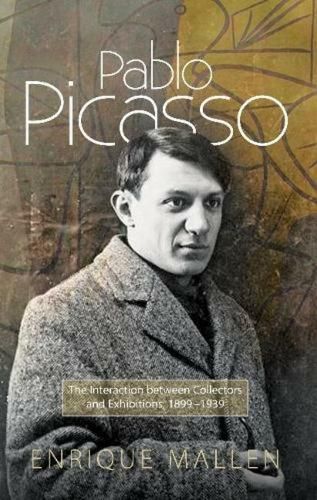Readings Newsletter
Become a Readings Member to make your shopping experience even easier.
Sign in or sign up for free!
You’re not far away from qualifying for FREE standard shipping within Australia
You’ve qualified for FREE standard shipping within Australia
The cart is loading…






This book explores the interaction between collectors, dealers and exhibitions in Pablo Picassos entire career. The former two often played a determining role in which artworks were included in expositions as well as their availability and value in the art market. The term collector/dealer must often be used in combination since the distinction between both is often unclear; Heinz Berggruen, for instance, identified himself primarily as a collector, although he also sold quite a few Picassos through his Paris gallery. On the whole, however, dealers bought more often than collectors; and they bought works by artists they were already involved with. While some dealers were above all professional gallery owners; most were mainly collectors who sporadically sold items from their collection. Picassos first known dealer was Pere Manyach, whom he met as he travelled to Paris in 1900 when he was only 19 years old. As his representative, Manyach went about setting up exhibitions of his works at galleries in the French capital, such as Bethe Weills and Ambroise Vollards. Picassos first major exhibition took place in 1901 at Vollards. Daniel-Henry Kahnweiler and Leonce Rosenberg came in after Vollard lost interest during the Cubist period, as they had a manifest preference for the new style. Like Vollard, later dealers often preferred the more conventional Neoclassical phase in Picasso. This was the case with Leonces brother, Paul Rosenberg. The book is organized chronologically and discusses the interaction between Picassos collectors, dealers and exhibitions as they take place. Once collectors acquired an artwork, their willingness to lend them to exhibitions or their necessity to submit them to auction had a direct impact on Picassos prominence in the art world.
$9.00 standard shipping within Australia
FREE standard shipping within Australia for orders over $100.00
Express & International shipping calculated at checkout
This book explores the interaction between collectors, dealers and exhibitions in Pablo Picassos entire career. The former two often played a determining role in which artworks were included in expositions as well as their availability and value in the art market. The term collector/dealer must often be used in combination since the distinction between both is often unclear; Heinz Berggruen, for instance, identified himself primarily as a collector, although he also sold quite a few Picassos through his Paris gallery. On the whole, however, dealers bought more often than collectors; and they bought works by artists they were already involved with. While some dealers were above all professional gallery owners; most were mainly collectors who sporadically sold items from their collection. Picassos first known dealer was Pere Manyach, whom he met as he travelled to Paris in 1900 when he was only 19 years old. As his representative, Manyach went about setting up exhibitions of his works at galleries in the French capital, such as Bethe Weills and Ambroise Vollards. Picassos first major exhibition took place in 1901 at Vollards. Daniel-Henry Kahnweiler and Leonce Rosenberg came in after Vollard lost interest during the Cubist period, as they had a manifest preference for the new style. Like Vollard, later dealers often preferred the more conventional Neoclassical phase in Picasso. This was the case with Leonces brother, Paul Rosenberg. The book is organized chronologically and discusses the interaction between Picassos collectors, dealers and exhibitions as they take place. Once collectors acquired an artwork, their willingness to lend them to exhibitions or their necessity to submit them to auction had a direct impact on Picassos prominence in the art world.